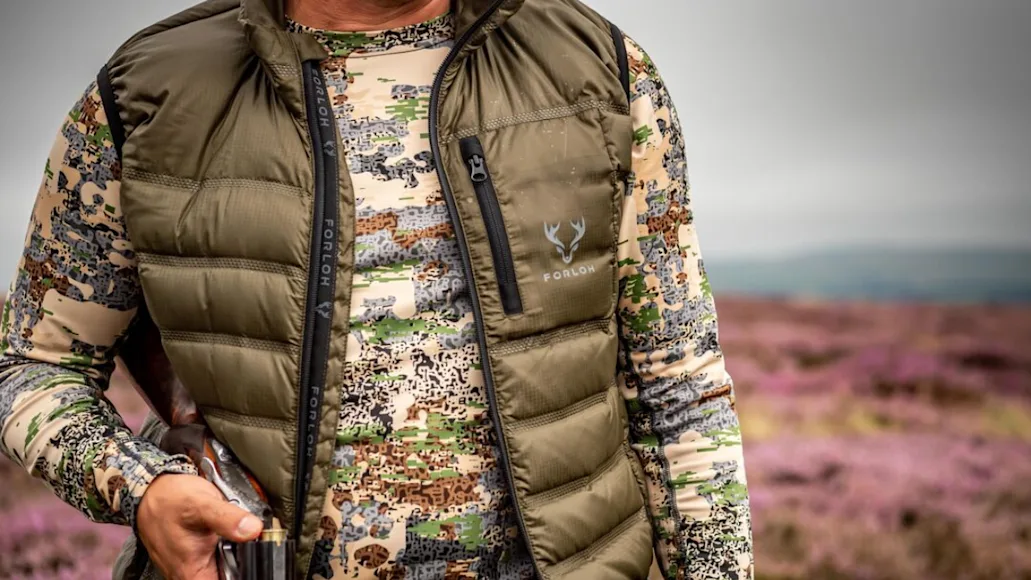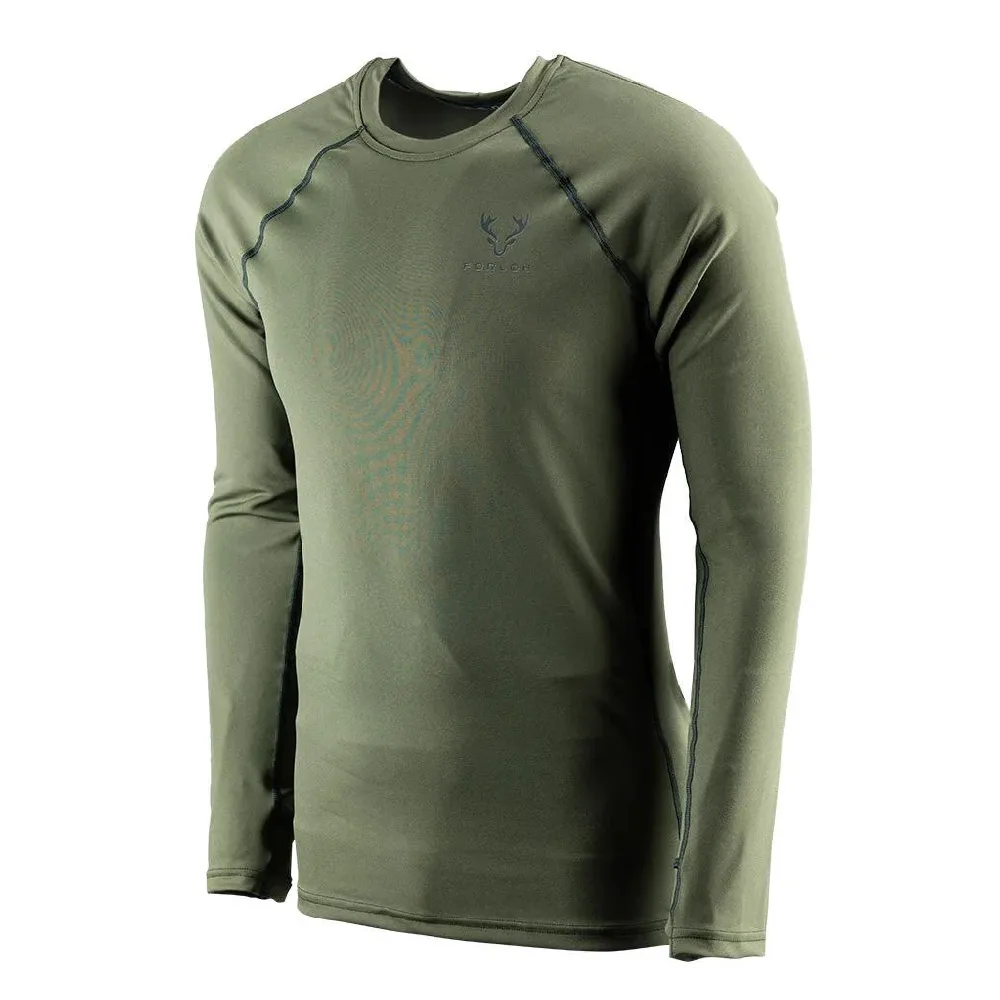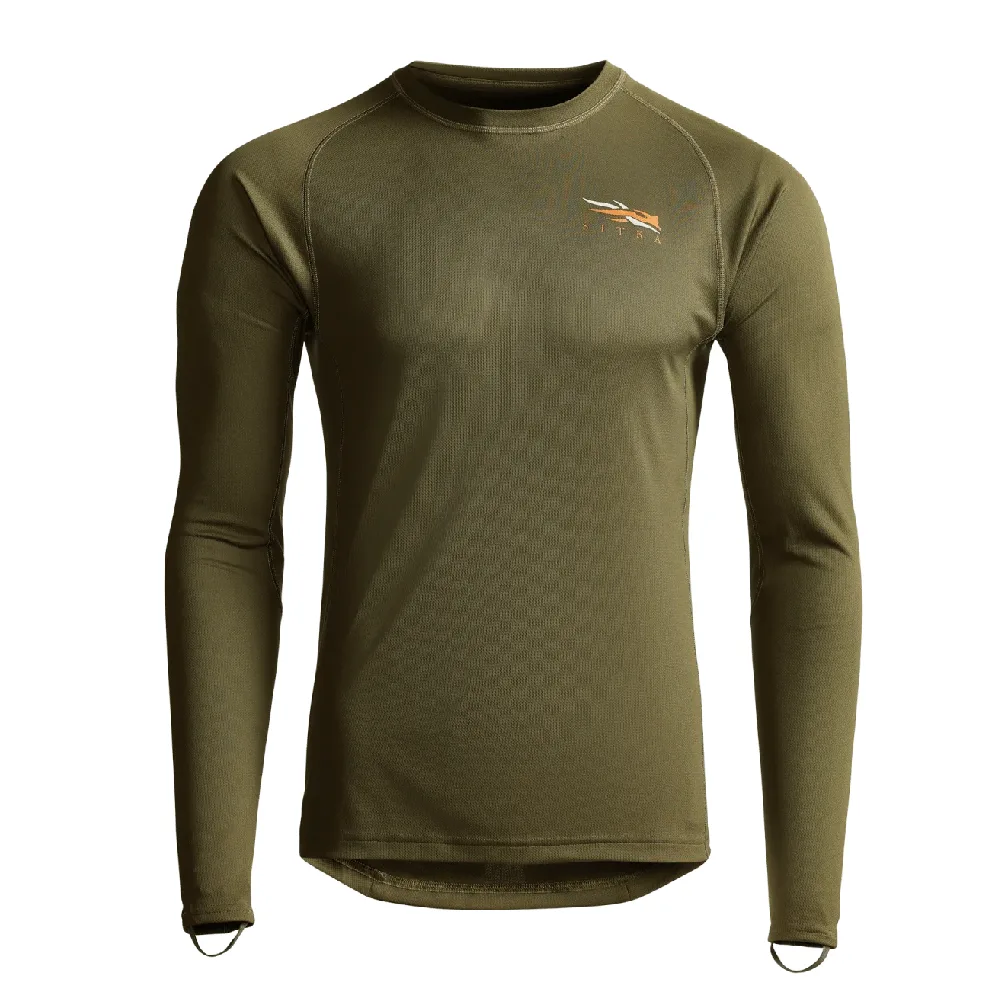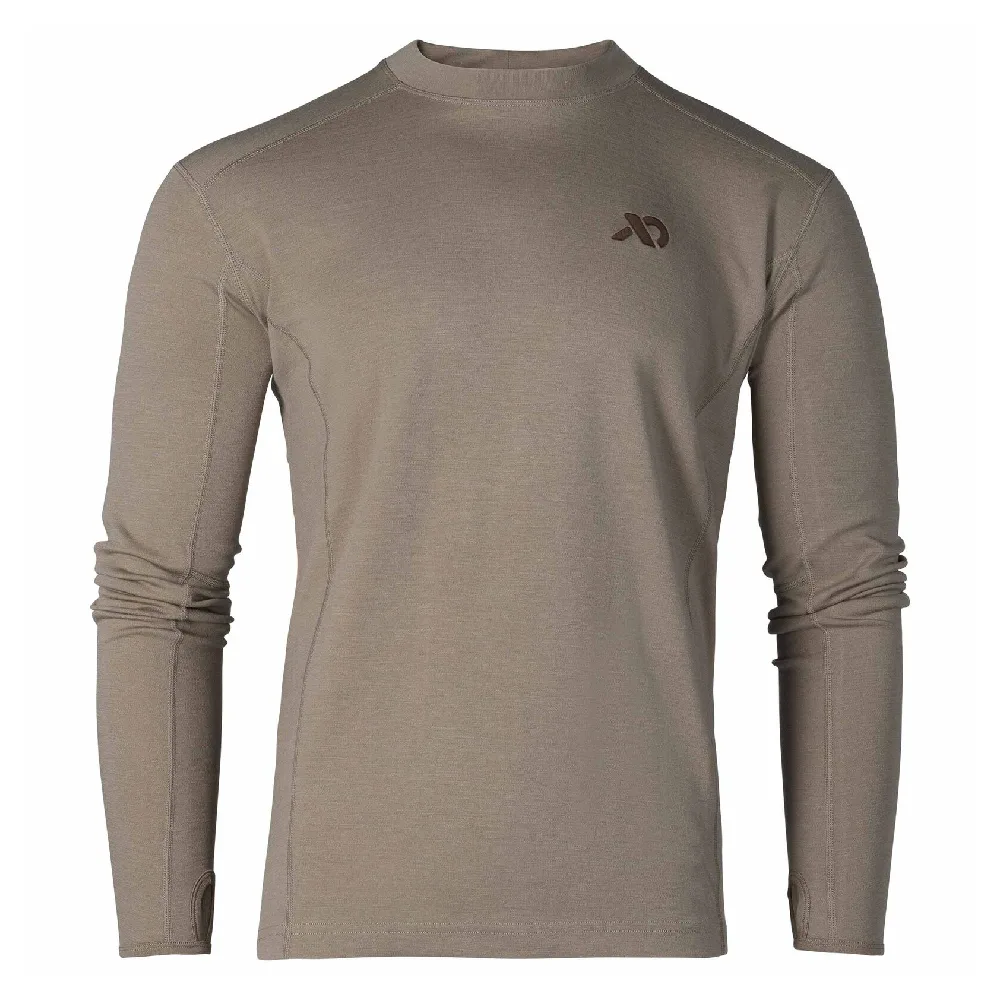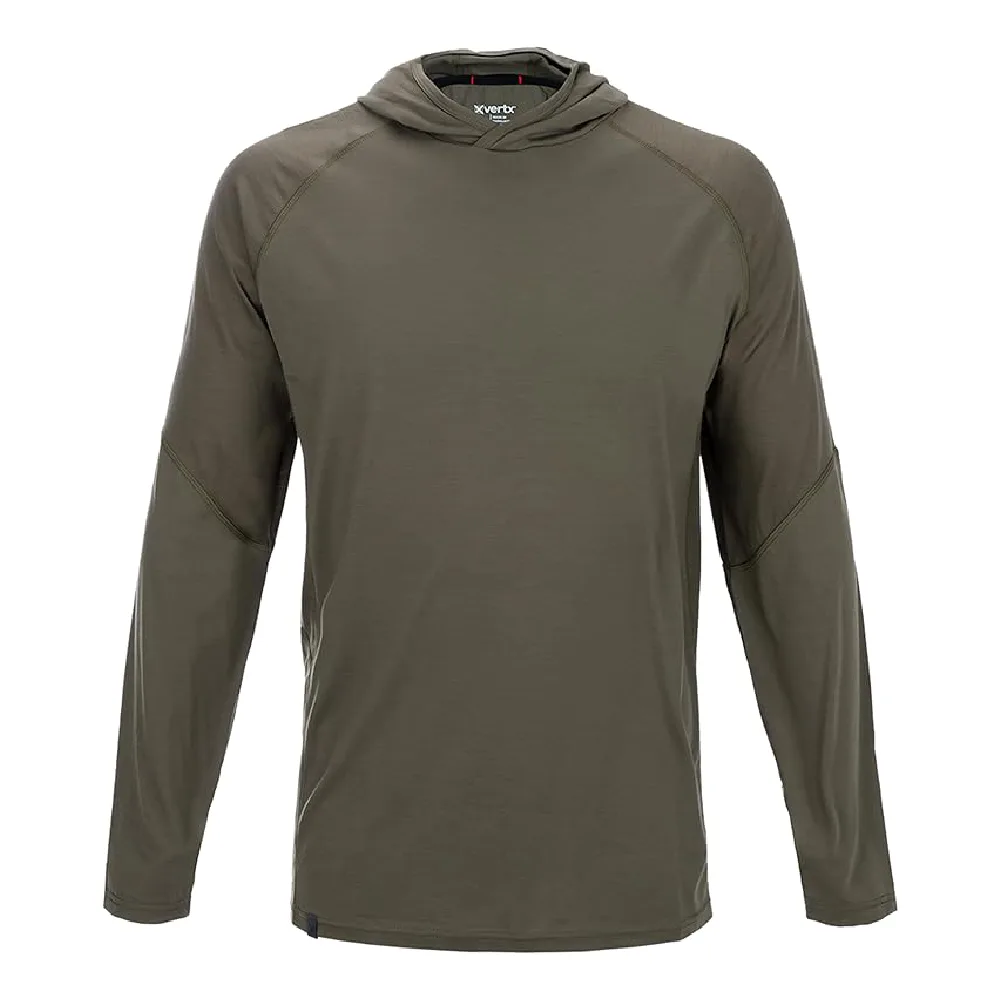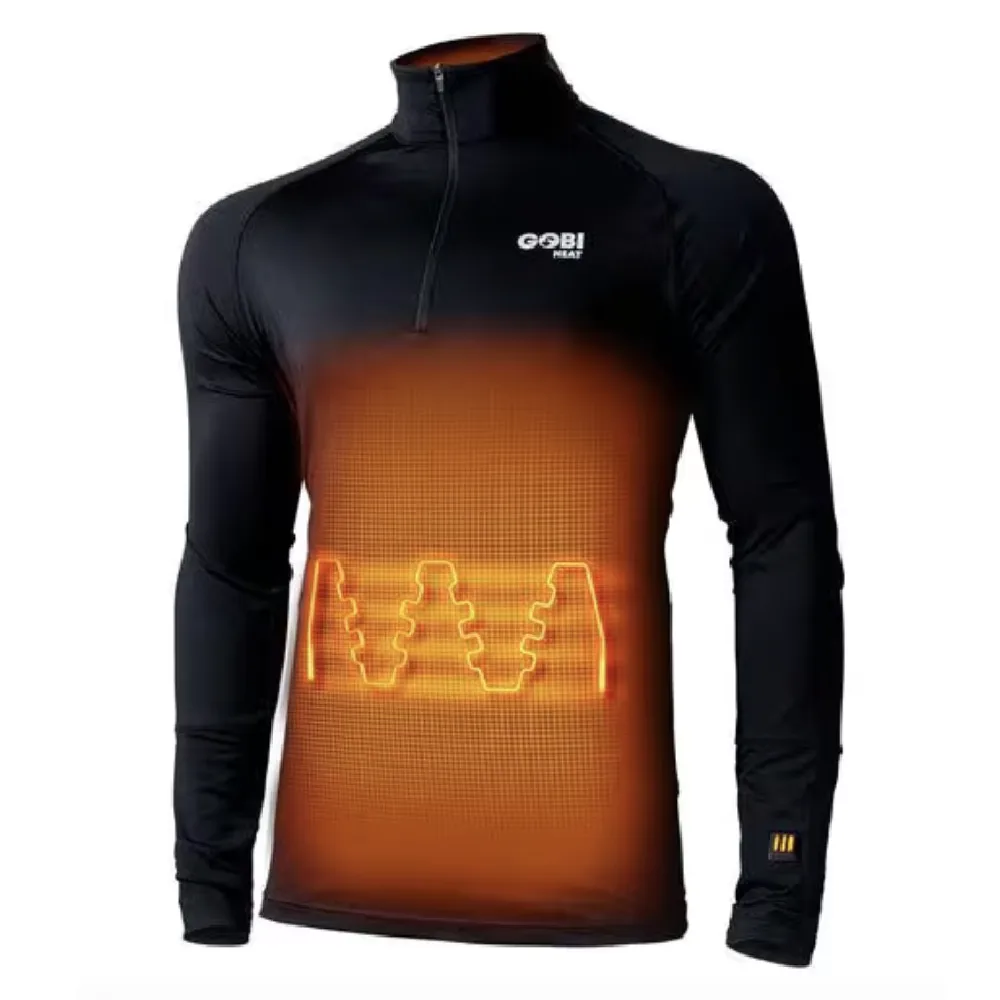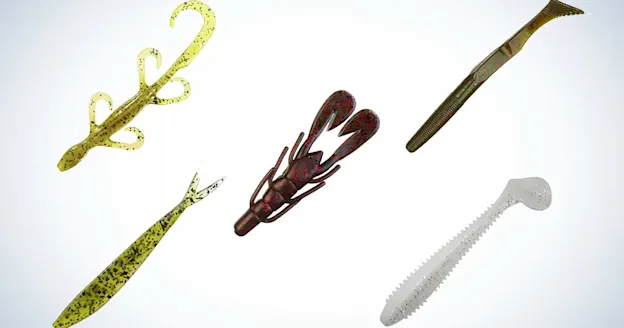We may earn revenue from the products available on this page and participate in affiliate programs. Learn more
Every hunter has shivered their way through a freezing day in a tree stand or a duck blind at some point. It’s almost a rite of passage. And then, in hopes of never suffering like that again, you begin the search for good hunting base layers. Withstanding the cold and the elements is a must if you hope to find success in the woods. After all, no one ever bagged a big buck sitting at home on their couch.
The good news is that it’s a little easier to brave the elements than in the past. More hunting clothing brands have started developing garments specifically to wick moisture and retain body heat over long periods in the outdoors. Because even if you don’t realize it, staying warm and comfortable starts with that vital first layer before the jacket and hunting pants. That’s why we did the research and the testing to find the absolute best base layers for hunting being manufactured today.
Best Overall: Forloh Deep Space Base Layer
Best For Active Hunters: Vertx Merino Wool Base Layer Hoody
Best Heated: Gobi Heat Basecamp Heated Base Layer Shirt
Most Versatile: Sitka Core Lightweight
Best For Late Season: First Lite Kiln
Best Overall: Forloh Deep Space Base Layer
Specs
Material: Polyester and spandex
Colors: 6 options, including solid colors and camo
Sizes: S - 3XL
Pros
Great fit
Exceptional comfort for extended sits
Lifetime warranty
Cons
Price
Not a fan of the low tag placement
I wore the Forloh Deep Space layers extensively in both Michigan and Wisconsin this season and they quickly became my go-to base layers. They were incredibly comfortable and held warmth nicely on the colder days. But they also performed well at the start of the Michigan firearms season, which had some abnormally warm 50 and 60-degree temperatures. I have a decent walk to my stand, but I didn’t sweat.
During my hunt in Wisconsin, we did some deer drives where we were continually on the move to keep ahead of the pushers. I stayed dry and comfortable the whole time despite some rather steep hills climbed wearing these layers.
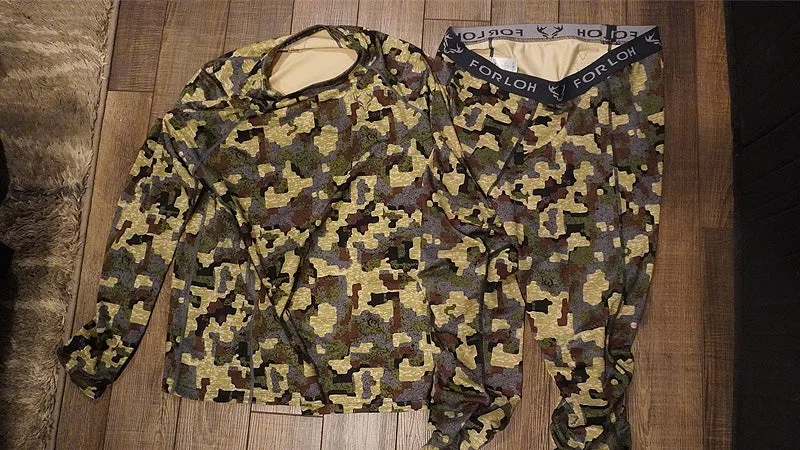
My favorite part of the Forloh base layer pants is the waistband. It’s nice and stretchy, but doesn’t dig in either. The two layers paired up make for a nice seal at the waistline that didn’t allow cold air to reach my core. These layers are rather expensive. But a lot of that cost is due to the fact they’re made here in the United States. It shows in the overall quality of the garments, from the stitching to the fit.
Best For Active Hunters: Vertx Merino Wool Base Layer Hoody
Specs
Material: Merino and nylon
Colors: Ranger green
Sizes: S - XXL
Pros
Extremely lightweight
Hood is a great bonus
Versatile
Cons
Feels a little light for frigid conditions
Only comes in one color
The Vertx base layers are relatively new, but I found them to be plenty effective for temperatures down to the 40s. I also wore these for one of my hunts in Wisconsin where I did a lot of hiking. The layers were extremely comfortable to move around in and not overly warm. We had some abnormal 60-degree November temperatures here in Michigan and the Vertx gear didn’t cause any sweating, even when doing a ton of uphill walking. I wore these layers under some lightweight Sitka for one of my hunts, and it ended up being a perfect combination.
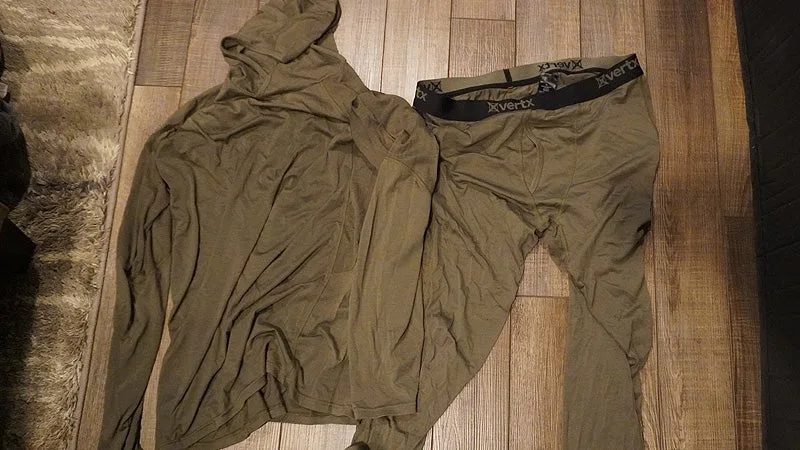
These layers breathed exceptionally well during my testing and because of that, I think they’ll be better suited for early season hunts. While they have a hood for added coverage, they feel a little light for late season, unless you’re wearing a very heavy mid layer. I noticed no odors even after hunting hard in them for days. The top could also double as a nice sun shirt for other outdoor activity in the summer months, which adds some excellent value.
Best Heated: Gobi Heat Basecamp Heated Base Layer Shirt
Specs
Material: Polyester and spandex
Colors: Onyx
Sizes: S - XXL
Pros
Exceptional warmth
Allows for lighter outer layers
Great placement of heating zones
Cons
Expensive
Only comes in one color
I’ve owned the Gobi Heat Basecamp layers for a few years now and they’re exceptional when the outside temperatures drop. These layers utilize a 10,000-mAh battery to heat strategically located zones throughout the garments. The top does a great job of keeping my torso toasty in especially frigid conditions. I usually set the heat on medium or high for the top and low for the pants. Personally, I found the higher settings to be overkill for the Basecamp pants due to the placement of the zones. But I think everyone’s preferences are going to vary a bit. I prefer more heat on the torso, which helps keep my extremities warm.
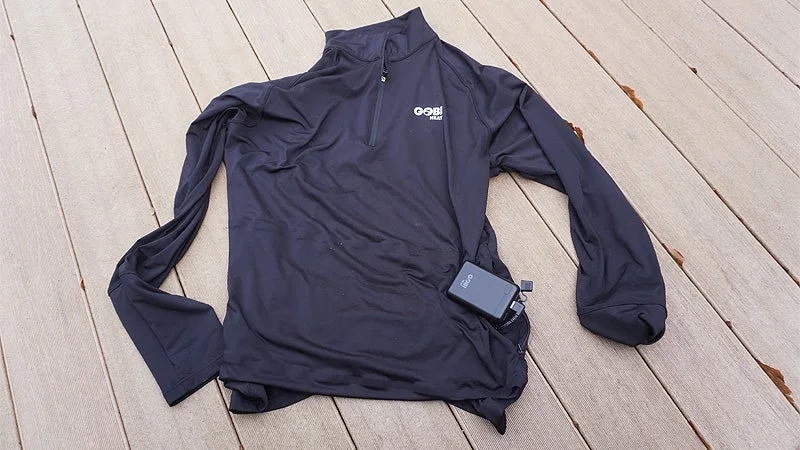
At $200 each, these layers are a serious investment. But it’s worth it if you’ve been unable to find any other option that works. These layers have allowed me to sit longer and see more deer every year. No other base layers I’ve tried will keep my body temperature up quite like these when the heat is cranked up. Another bonus is that I can wear lighter mid layers and hunting jackets because these layers are providing the primary heat.
Most Versatile: Sitka Core Lightweight
Specs
Material: Polyester
Colors: 8 options, including camo and solid colors
Sizes: S - 3XL in standard and tall lengths
Pros
Great moisture-wicking properties
Top can serve as outer wear
Easy to layer
Cons
A little light for frigid conditions
The breathability and moisture-wicking qualities of the Sitka Core crew and lightweight bottom are top-notch. These layers are excellent for early season hunts in warmer weather, especially if you’re on an active hunt where you’re doing a lot of spot and stalking. The polyester material also includes some Polygiene odor control tech. This makes these layers a good choice for a multi-day trip into the backcountry where showers aren’t an option. They’re also light and thin enough for multiple layers.
Although the warmth of these layers isn’t ideal for more frigid conditions, there is some additional versatility in the top. It’s offered in some of Sitka’s most popular patterns, making it great for turkey hunting in the warm weather of more southern climates. The $80 price point is also a bit more affordable than some of the other premium hunting clothing brands out there today.
Best For Late Season: First Lite Kiln
Specs
Material: Merino wool and spandex
Colors: 10 options, including camo and solid colors
Sizes: S - 3XL
Pros
Great heat retention
Soft material
Lots of variations
Cons
Might be too much for active hunting
First Lite gave these layers a very appropriate name in Kiln. Their heat retention qualities are excellent. The merino and spandex mix is a great comfort and warmth combination for especially frigid hunts. First Lite offers several variations on these layers including long johns, a quarter zip, and even a hoody. There’s literally something for everyone here regardless of your preferred style.
These layers are a little warm for active hunting but they’re going to be just what you need for those long, stationary late season sits in a freezing tree stand or blind. They’re also a little on the expensive side. However, they are versatile enough to function as a next to skin base layer or a mid layer when temperatures really drop.
How We Tested Base Layers for Hunting
To start, we did plenty of research into the materials used for each of our picks. Certain fabrics like merino wool and polyester are going to do a much better job of wicking moisture and retaining heat than something traditional like cotton. We also tested many of these base layers as much as possible under real world conditions. I wore them on deer hunts in both Michigan and Wisconsin.
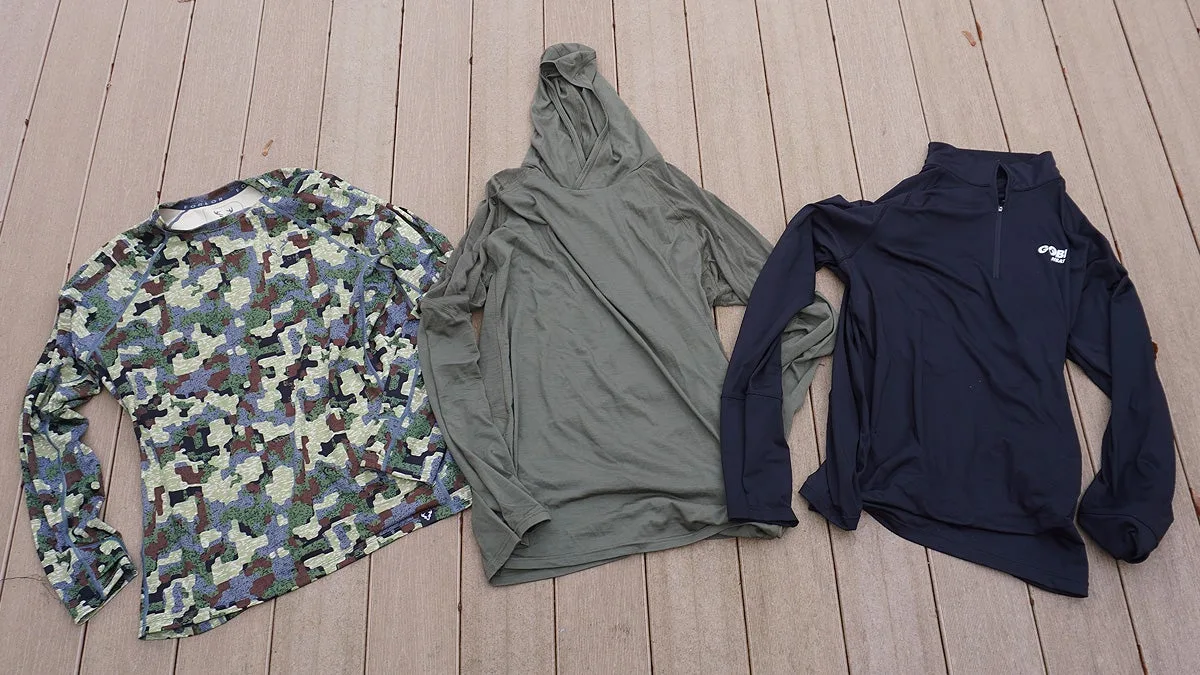
I also did some hiking and other activities wearing these layers to test their effectiveness under a variety hunting scenarios. It worked out nicely because I was able to evaluate how each layer moved and breathed in a more strenuous hunting situation. Additionally, I considered the following factors:
Fit: How well does the size correspond with the fit of the base layers? Are they overly constrictive in any way?
Versatility: Can you wear these layers as a stand-alone garment? Do they have any additional features that make them useable in other seasons?
Value: Do the features and materials match the price point?
What To Look for in Base Layers
If you’re like me, you probably spent a ton of time shivering and freezing while wearing layer upon layer of cheap cotton. Unfortunately, while it’s more affordable, cotton is lousy for hunting because it absorbs moisture rather than shedding it. Then, when exposed to cold temperatures, it starts to freeze up and your body gets cold with it.
That’s why warmth mostly comes down to the types of fabric being used. While the optimal fabrics used in many base layers often drive up the price, the difference is night and day. Once you invest in a quality base layer, you’ll wonder how you got along without it for so long.
Merino Wool
I’ve become a big fan of merino wool because it keeps you warm while also offering a great deal of breathability. It’s naturally odor-resistant, which is a huge benefit while hunting whitetails and other animals with a sharp sense of smell. The main downside is the cost. Merino wool is often sheared and imported from sheep in New Zealand. Thus, it’s not uncommon for a shirt of Merino wool to cost $100 all by itself. It’s a bit of an investment to buy shirts and long johns made of the material.
Synthetic/Polyester
Many base layers are increasingly being made of polyester because it offers the same warming qualities. In fact, some hunters swear polyester might even be slightly warmer. Polyester will usually last longer. The price points are often rather comparable, but you can sometimes find polyester layers at a much cheaper price. However, there are downsides. Unfortunately, once damp, polyester loses its warming qualities. Thus, it’s not a great choice if you deal with a ton of snow or rain each season. Synthetic materials aren’t always the best for reducing odors, either.
Fleece
Fleece is another great base layer material because it’s comfortable and it does an excellent job of trapping heat. It’s a good option if you want to keep your setup lighter. Fleece has a distinct disadvantage in not handling the wind, but if you have a mid layer and outer layer above it, that becomes less of a factor. Unfortunately, it also becomes dirty quite easily. The price point is rather comparable with that of wool and polyester in most cases.
Blends
Most base layers are a blend of different materials. Merino wool and polyester, and wool-synthetic blends are some of the most common ones available today. Depending on the type of blend, you can get some of the benefits of multiple kinds of fabric in a single garment. Some of the blends can be quite toasty for extremely frigid weather.
FAQs
Q: How many layers do you wear for hunting? This depends on the weather and the scenario. But for most hunting scenarios, a base layer and a mid layer beneath an outer layer are all that’s needed. The mid layer usually acts as an insulating layer between the base and the outer layer, which is usually a jacket or raincoat.
Q: Are base layers better than thermals? Depending on who you ask, some hunters group thermals and base layers as one and the same. Although thermals are technically better insulated and better prepped for dealing with more frigid conditions. As for better, that’s more of a personal preference that will vary from hunter to hunt. In many ways, both have their place in a hunter’s arsenal of hunting clothing.
Q: Should base layers be tight or loose? This is another question where the answer comes down mostly to personal preference. Unfortunately, that can only be gained through testing and experiencing a base layer for yourself. I personally prefer my base layers to be snug, but not overly tight either. Base layers that are too tight become restrictive to movements and are uncomfortable to walk to the stand or blind. Some people prefer something looser for warm weather and tighter for cold. The thinking here is tighter layers will restrict the flow of cold air. While loose layers will help the fabric breathe better.
Final Thoughts
While I found all the best base layers for hunting listed here as very effective, I kept returning to the Forloh Deep Space base layers simply because they’re darn comfortable. I also didn’t need to wear excessive mid layers for temperatures in the 30s to 50s. The fact that these layers are made here in the states, and have an excellent warranty, is just the icing on the cake.
Why Trust Us
For more than 125 years, Field & Stream has been providing readers with honest and authentic coverage of outdoor gear. Our writers and editors eat, sleep, and breathe the outdoors, and that passion comes through in our product reviews. You can count on F&S to keep you up to date on the best new gear. And when we write about a product—whether it’s a bass lure or a backpack—we cover the good and the bad, so you know exactly what to expect before you decide to make a purchase.

